How to remove limescale from taps: 7 ways to make furry faucets look like new
Faucets chock-full of calcium? Check out this guide on how to remove limescale from taps

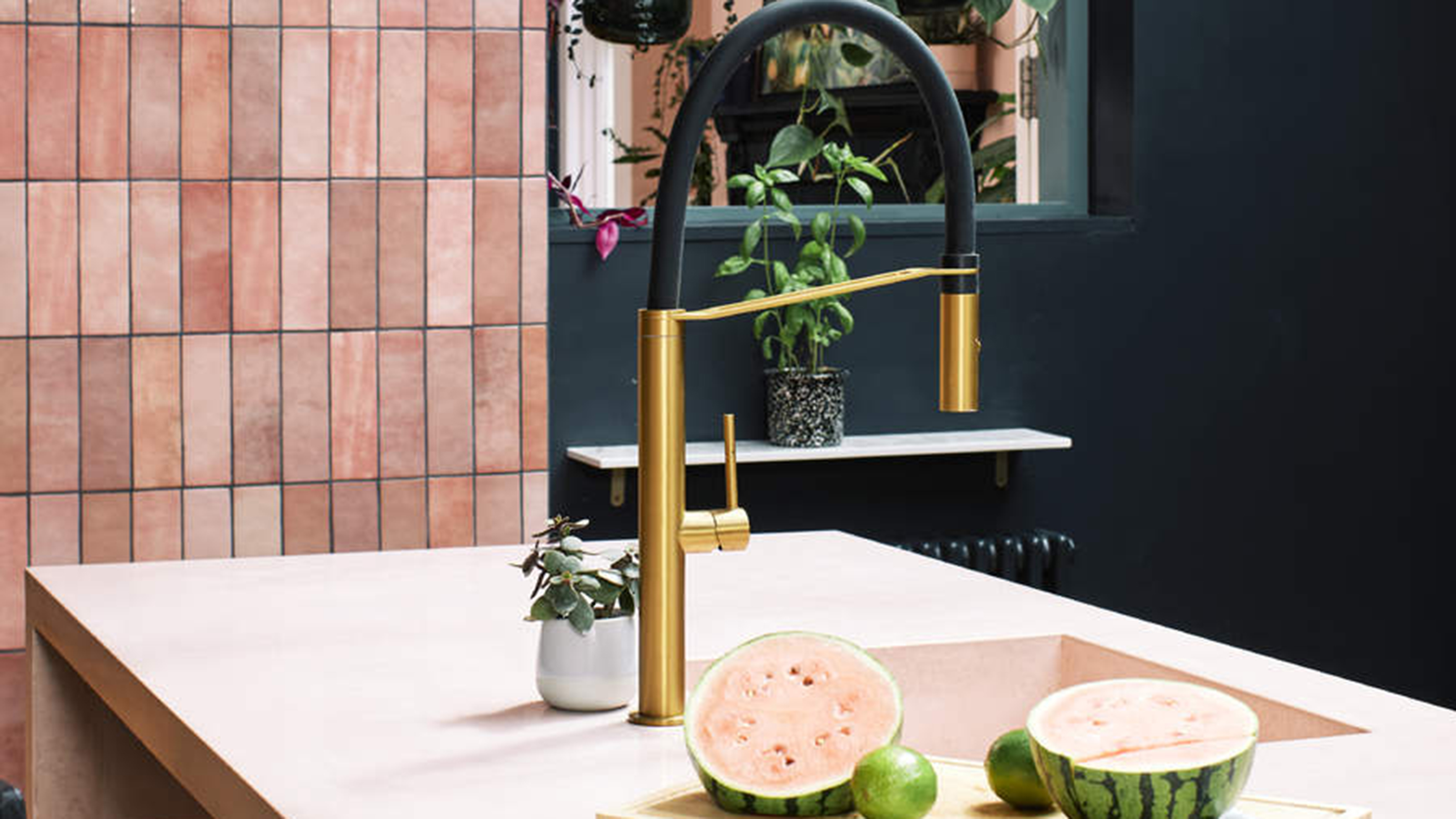
If you've noticed chalky deposits on your spouts, it's time to find out how to remove limescale from taps. Aside from looking dirty, having calcium carbonate build-up can increase your water bills because the scaley bits make it harder for water to travel.
You could have the best bathroom tap, but if they're blocked up with limescale, they're not gonna serve the polished aesthetic you had in mind.
Thankfully, you don't need a plumber to get rid of this plaque-like substance, nor do you need to buy harsh chemicals to treat your taps. Because we have some of the best bathroom cleaning hacks going (if we do say so ourselves), plus tips to stop it forming in the first place.
We'll show you how to remove limescale on taps, and inside them too, whether you have a thick layer of calcified content or have spotted the first signs of furring.
Limescale removal essentials
1. Fresh lemons
2. White vinegar or leftover pickle juice
3. A clean microfiber cloth
4. Scouring pad
5. Baking soda
6. An old toothbrush
7. Cheap toothpaste
8. WD-40

1. Make limescale vanish with vinegar and lemon
Anything acidic is great for breaking down mineral deposits like Limescale. But you needn't go to lengths to get any professional chemicals to tackle your taps. Cleaning with vinegar or leftover pickling liquid will erode any scaling and using lemon to clean is the perfect partner in crime.
Be mindful, however, that if you have one of those bendy taps with a rubber component, then this is on the list of what not to clean with vinegar. Vinegar will damage rubber if contact is prolonged or frequent.
'Taps are one of the trickier bathroom fixtures to clean,' warns Emma Foster, senior marketing manager, Mira Showers.
Get small space home decor ideas, celeb inspiration, DIY tips and more, straight to your inbox!
'Lemon juice or vinegar will drip off when sprayed, not allowing the acid enough time to work on the scale. You’ll often notice white deposits on the spout, so targeting this area is a good idea.'
She sets out a simple six-step guide to keeping your taps clean and limescale-free.
Method:
- Soak a rag or a cloth in vinegar or lemon juice and wrap it around your tap, ensuring all areas are covered.
- Secure the cloth with an elastic band and leave for an hour.
- Occasionally squeeze the cloth to release more of the acid onto the tap.
- Remove the cloth and wipe away the limescale.
- If the limescale around the spout still won’t come away completely, cut a lemon in half and screw it onto the spout until it stays in place.
- Leave for another hour and then rinse and scrub away the remaining scale. Use a scouring pad on tough limescale, but only on the underside of the spout as it may scratch the finish on the faucet itself.
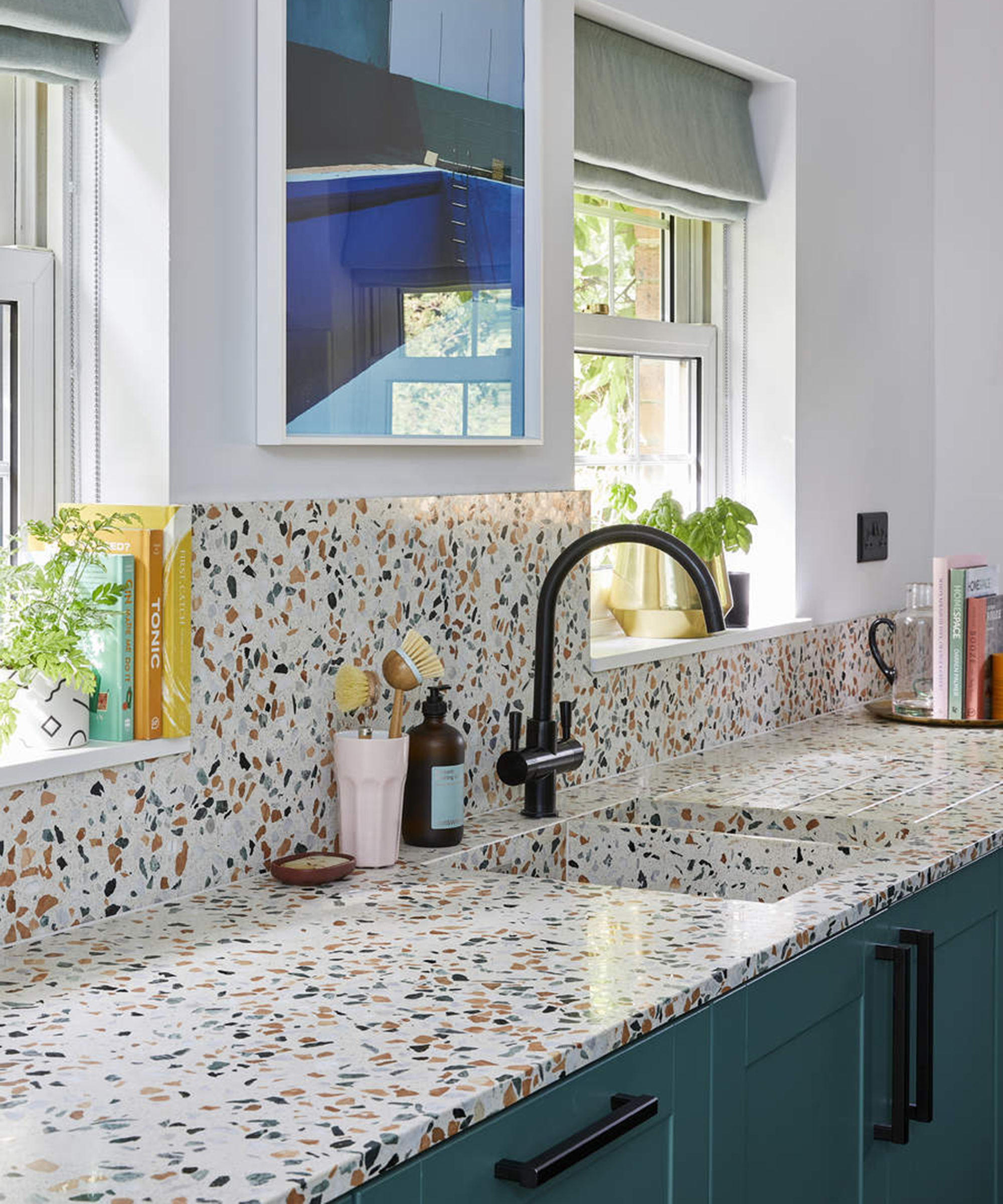
2. Create a DIY limescale remover with diluted vinegar
As an alternative DIY limescale remover, create a diluted vinegar solution with water and vinegar and decant this into a cheap glass spray bottle for an easier, more uniform application that doesn't require citrus fruit.
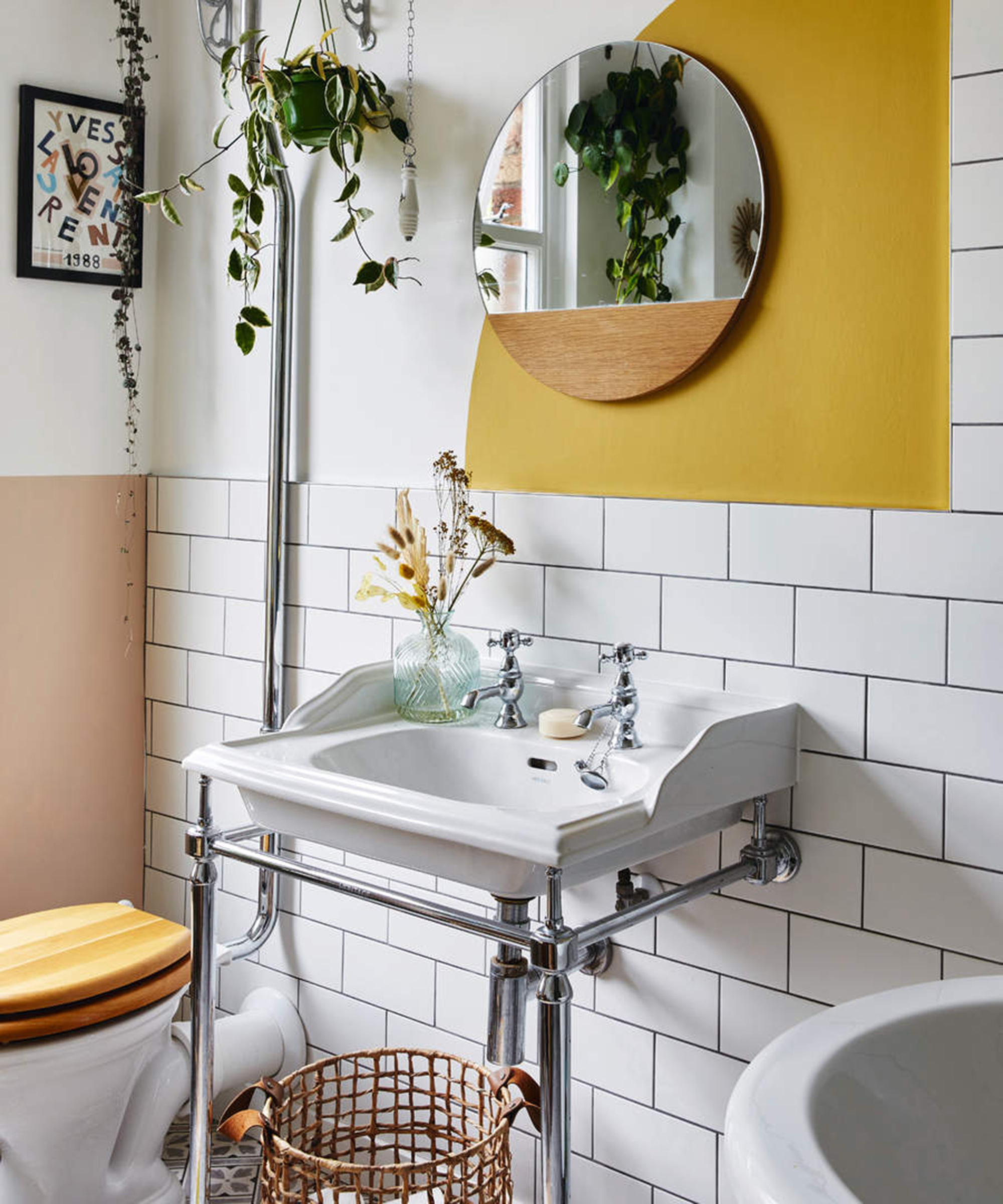
3. Remove limescale stains with baking soda
Using baking soda to clean is one of the most environmentally-friendly ways to eliminate limescale stains (and it's cheap too!). So for sparkling kitchen faucets, get yourself some sodium bicarbonate and you're sorted.
Method:
- To remove limescale stains with baking soda, simply mix three tablespoons of bicarbonate with one tablespoon of water in a bowl. The mixture should be a little pasty.
- Then, apply it to the stain to be treated and allow it to dry. With an old toothbrush (or a cheap one from Amazon), rub the treated area until removed.
4. Use a copper coin to scrape off limescale
Here at Real Homes, we're all about the cheap hacks... but this is one of the thriftiest to date! All you need to do is raid your piggy bank (or random drawer) to find a copper coin (and you don't even need to spend it).
Simply wet the coin (with water from your faucet, duh), and then use the copper piece to scrape away at the tap's surface. If the limescale is at the front of your tap, you might want to try an inconspicuous area underneath first just to make sure you don't damage the metal plating.
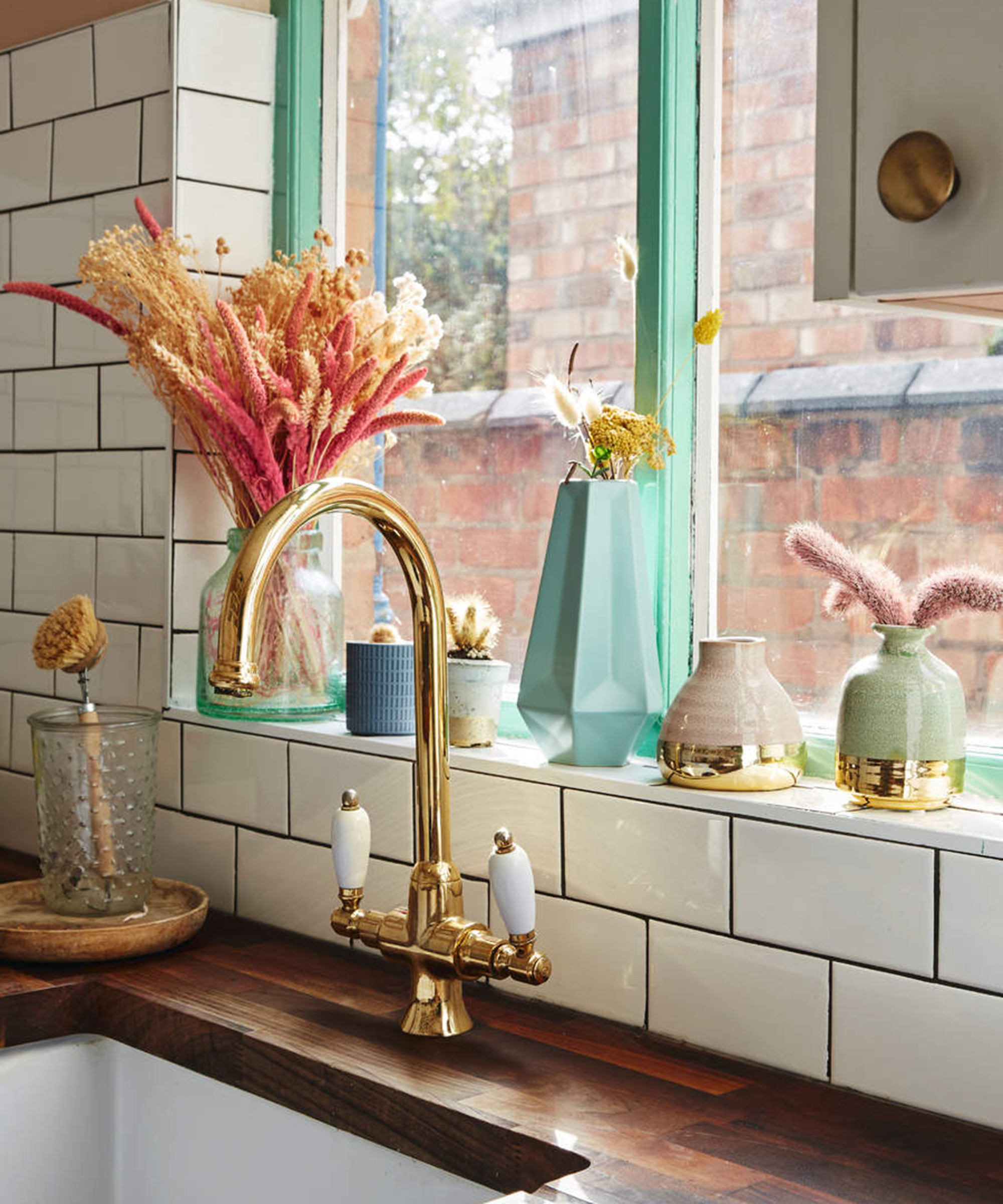
5. Tackle limescale stains with toothpaste
Yep, the paste you use to give you a cracking smile can also shift stubborn limescale. Taps and teeth have something in common: they can both have tartar build-up. So next time you're brushing your teeth, try using your dentifrice on your bathroom fixtures. There's no need to waste your special whitening or charcoal product on your taps, the regular stuff from Colgate on Amazon will work just as well.
6. Wipe away limescale on taps with WD-40
Is there anything this multi-purpose product can't do? While you shouldn't use WD-40 on anything electronic or plastic – it's a great buy for removing limescale on taps, and the little red smart straw that it comes with means that you can get right into the nooks and crannies of your faucet, and even inside it.
If you're using it to clean your kitchen faucets (or anywhere with drinking water), it's best to let your tap run for a while to ensure you're not ingesting the petroleum-derived lubricant.
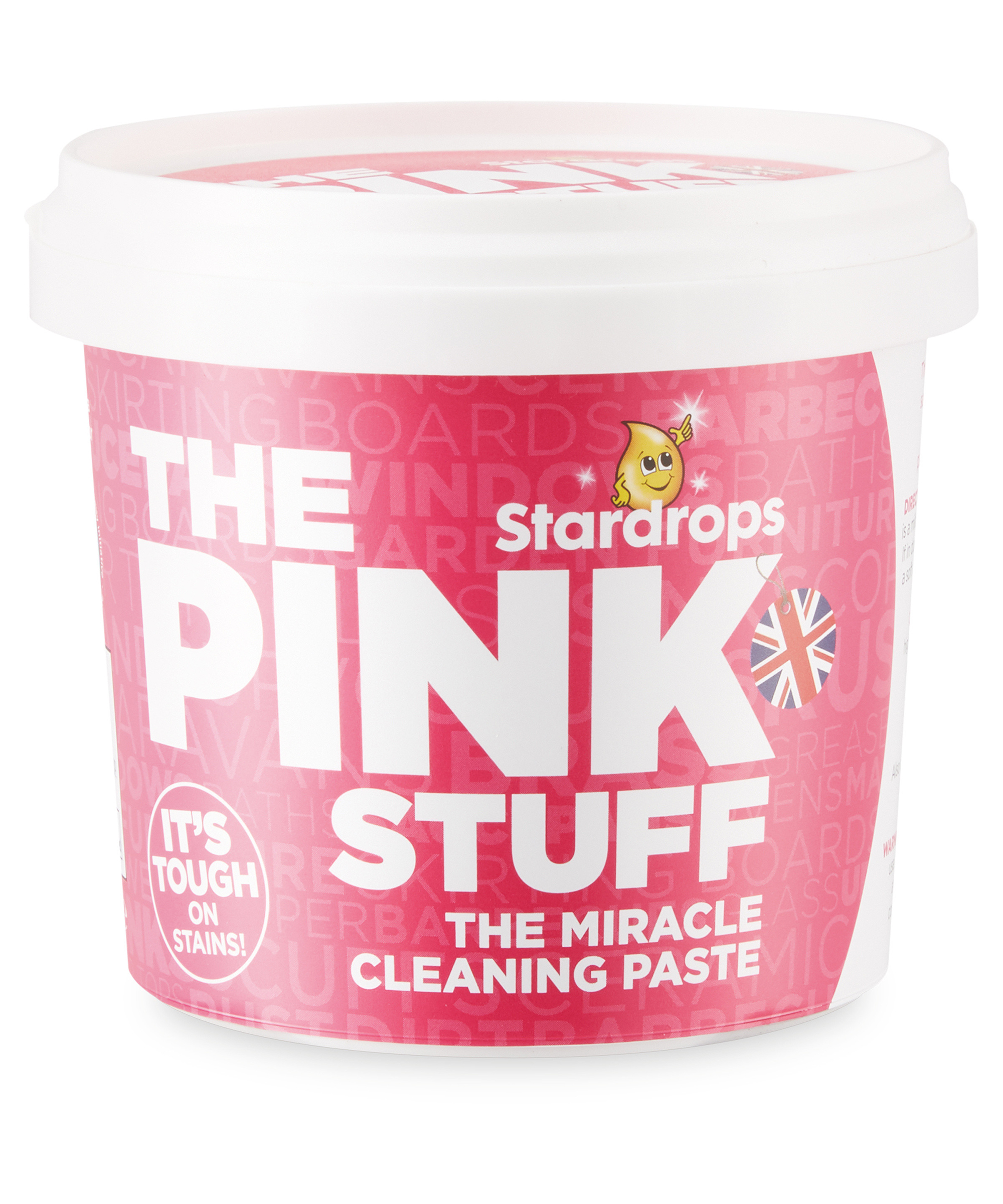
7. Use a conventional limescale remover
There are loads of good cleaning agents that claim to be the best at stain removal. But rather than using an expensive cleaner, get the most bang for your buck with a multi-use product that you can use everywhere in the home – not just on your taps.
Cleanfluncer Mrs. Hinch (and our very own Lindsey Davis) swears by Stardrops – The Pink Stuff Miracle cleaning paste. It's even made our best cleaning supplies list, but you could also try Bar Keeper's Friend, or The Method Shower Cleaner, which will leave your taps smelling like passion fruit or ylang-ylang.

How do you remove limescale from chrome taps?
Chrome is a pretty tolerant material but you want to still treat it with care to maintain that mirror shine. The key is using gentle acids such as those found naturally in your favorite fruits.
'I love having a bowl full of lemons in my house, not only do they help brighten up my kitchen but they can be really handy and help out with the cleaning,' says Lynsey Crombie, aka Lynsey Queen of Clean.
'Making changes like this and using fewer toxins is so good for you and the environment. Lemons not only smell gorgeous but can really help improve shine.'
'Lemon is great at tackling limescale. For limescale that is on your taps, very simply cut your lemon in half and run the lemon all over the tap where the limescale is present. Leave the lemon on the tap for a while so that it can get to work and then rinse away. You may need to repeat this process.'
We're all about making sustainable changes to our cleaning regime, and it seems the experts are clued up on the best eco-friendly cleaning products too.

How to avoid limescale build-up on taps
If the limescale on your taps is getting worse, you may live in a hard water area. Put simply, this means that your H₂O supply contains a high level of minerals like calcium and magnesium carbonates, bicarbonates, and sulfates. While drinking this water has many health benefits, it doesn't look great on your tap.
You can avoid it building up by making sure you wipe down surfaces straight after use. This may include cleaning a shower with a cloth, towel, or rag so that your shower head doesn't drip onto your faucet.
Limescale increases your energy bills and can reduce the performance efficacy of your favorite shampoos and shower gels. So if you want to save on your utility and other household bills, consider investing in a water softener (Kinetico is available in the US and the UK, or you could try Harvey Water Softener –The UK’s No.1 Water Softener).

Hi, I'm the former acting head ecommerce editor at Real Homes. Prior to working for the Future plc family, I've worked on a number of consumer events including the Ideal Home Show, Grand Designs Live, and Good Homes Magazine. With a first class degree from Keele University, and a plethora of experience in digital marketing, editorial, and social media, I have an eye for what should be in your shopping basket and have gone through the internal customer advisor accreditation process.